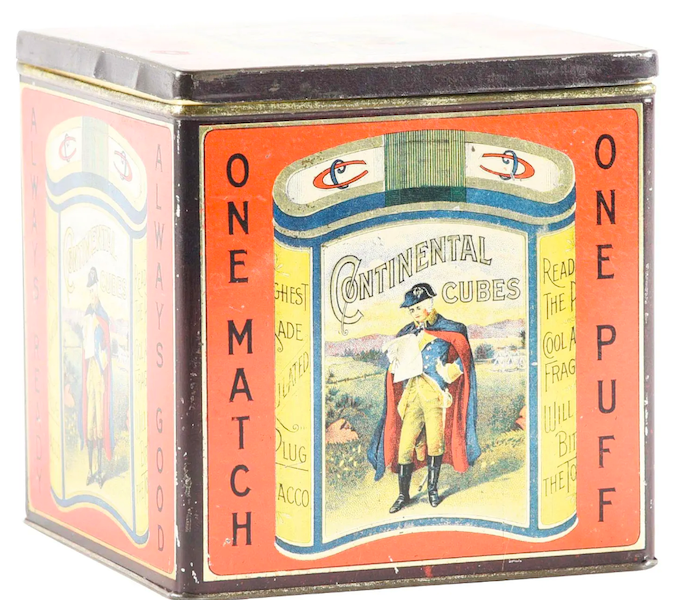
NEW YORK — Patented in 1875, offset lithography quickly became the preferred way to decorate tin products, and the tobacco industry was a pioneer in utilizing the then-revolutionary technology to advertise its wares.
Tobacco tins were used to keep tobacco fresh and extend its shelf life. Once opened, tobacco soon dried out so boxy or cylindrical tins about 6 to 8 inches inches tall were used to store bulk tobacco while smaller pocket tins were good for taking tobacco on-the-go. As the shapes and sizes of tobacco tines were fairly uniform with a few exceptions, companies were adept at making their tins stand out on shelves with colorful decoration and imagery. Most were designed to appeal to male consumers so “masculine” imagery, including sports, the navy and gentlemanly leisure pursuits were frequently used on tobacco tins.
Among the most rare tobacco tins for the Continental Cubes tobacco brand was a four-sided tobacco tin for the American Tobacco Company, which at one time sold about 80% of cigarettes, tobacco and snuff produced in the United States. The tin (example shown at top of page) features lavish decoration with US President George Washington in his military attire reading a map, pictured in a pastoral landscape. Examples in great condition retaining bright colors perform well, such as one that sold for $5,000 plus the buyer’s premium in June 2020 at Dan Morphy Auctions. Standing 5 inches tall, the tin held eight ounces of Continental Cubes tobacco and had extensive lithographed text all over. One side reads in a large lettering “One Match, One Puff,” and another “Its Mild, Its Good,” and each side had other slogans in smaller typeface. According to Morphy’s, this is the scarcest version of all Continental Cubes tins.
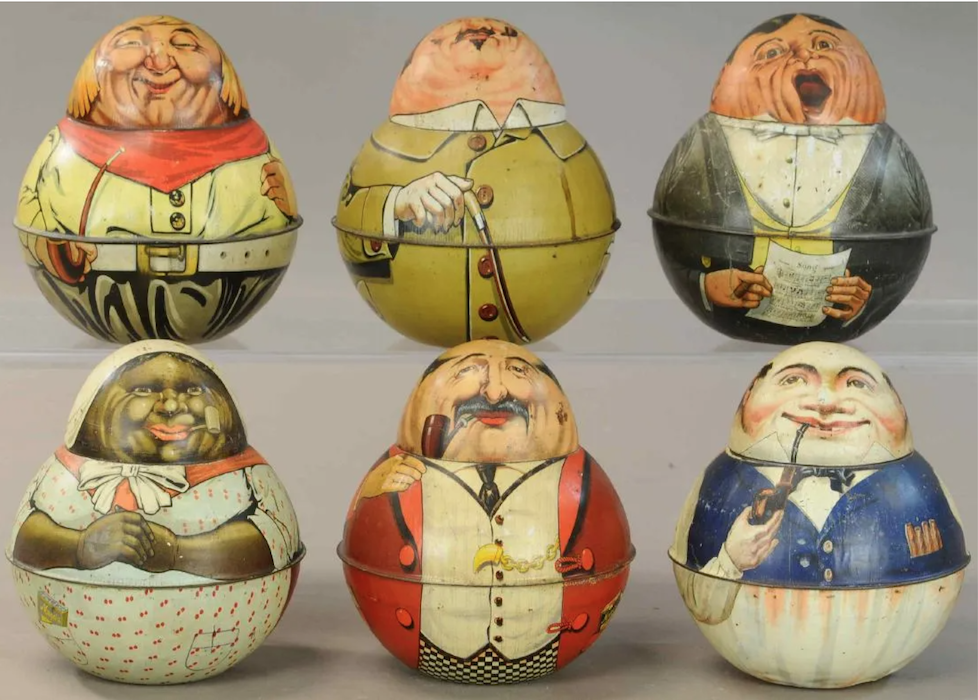
Notable among the few non-standard shaped tobacco tins made were the figural roly poly tins used by Mayo’s Cut Plug, circa 1915, that could each hold about a pound of Mayo’s plug tobacco. Decorated with six figures having removable heads, including an opera singer (or singing waiter), storekeeper, and a satisfied customer, these tins remain highly collectible today. A set of six tins brought $2,500 plus the buyer’s premium in May 2019 at Bertoia Auctions.
Baseball and tobacco have often gone hand in hand and player cards, sponsored by tobacco companies, have long been desirable and brought stunning prices. They were even affectionately known as T-cards. It’s little surprise then that star players like Babe Ruth were recruited to market all kinds of products, including plug tobacco. The 1920s and ’30s were arguably the heyday for gentlemen to smoke tobacco from pipes. Ruth was known to be a heavy smoker himself, so he endorsed the Bambino tobacco brand.
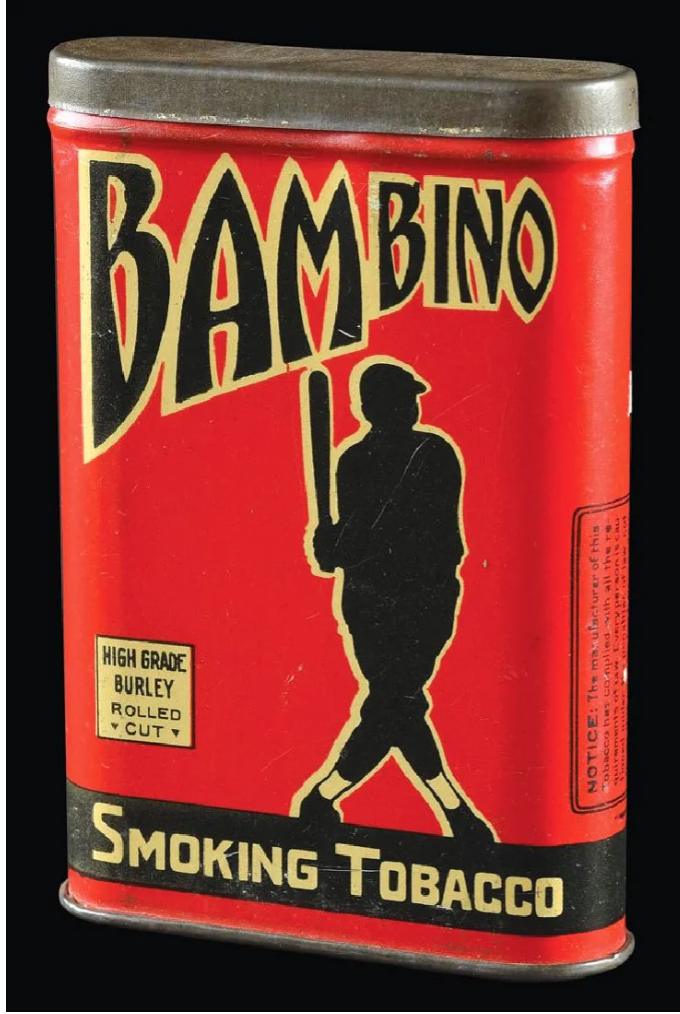
A Bambino tobacco tin, featuring a silhouette of Ruth standing in his typical batting stance, is among the most sought after as well as scarce. Bambino’s was never among the biggest of the tobacco brands so its tins are hard to find today and many are in sad shape. A late 1920s example in excellent condition realized $4,393 plus the buyer’s premium in February 2019 at RR Auction.
By comparison, European examples of tobacco tins tended to be more pictorial and less advertorial, as evidenced by a root-wood tobacco tin with a faux micromosaic plaque that went out at $4,773 plus the buyer’s premium in a June 2019 sale conducted by Colasanti Casa D’Aste. The self-framed plaque depicts the Lucano Bridge, an ancient stone bridge over Rome’s Aniene River.
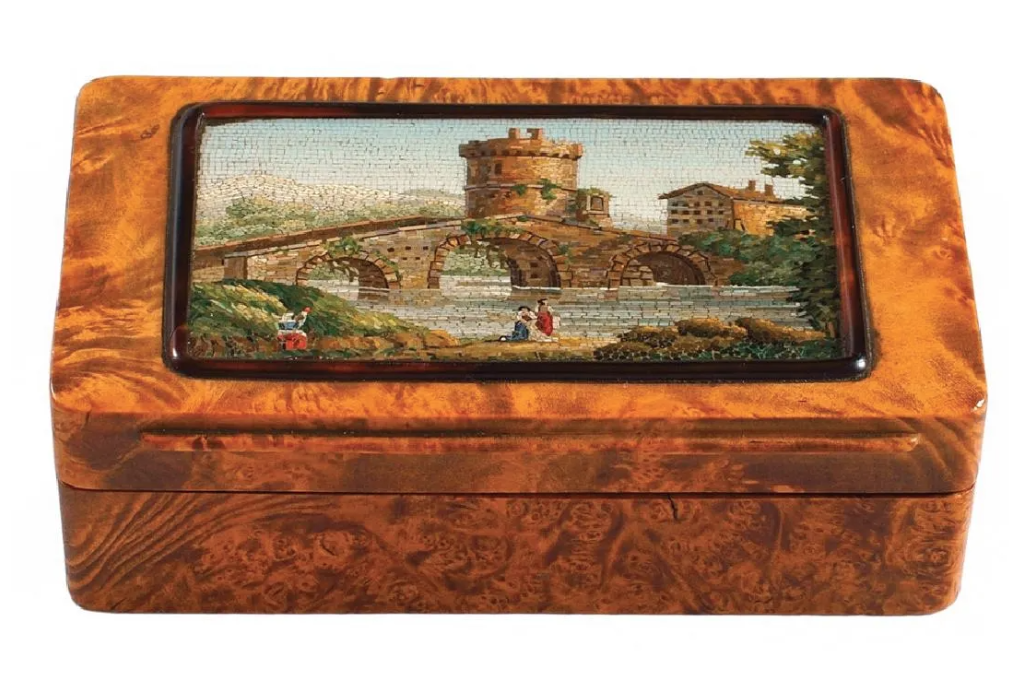
Cigarettes were sometimes tipped in gold and certain tobacco tins also used gold as a design motif to convey their product’s status, including the Gold Dust brand out of Canada. A Gold Dust pocket tobacco tin, featuring a group of three men panning the Yukon for gold. One of its tins, retaining more than 90% of its original gold finish, sold for $3,659 plus the buyer’s premium in June 2018 at Miller & Miller Auctions Ltd.
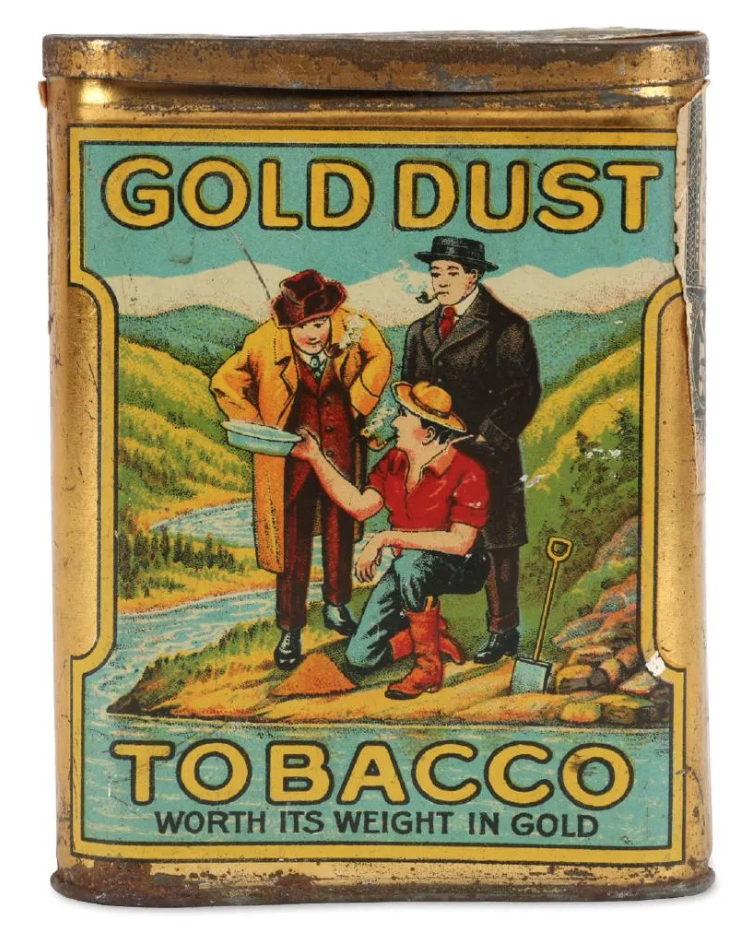
# # #



